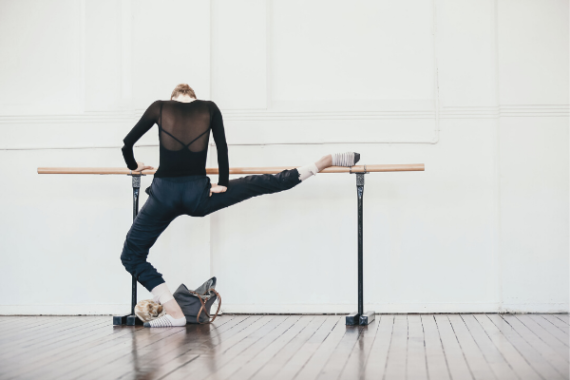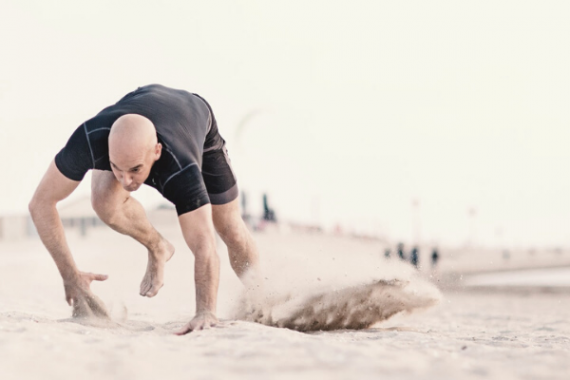- Free Articles
- Shop
- Workshops
- The Dance Educator Series
- L1 – The Fundamentals
- L2 – Pointe Intensive
- L2 – Flexibility Intensive
- L2 – Training Turnout in Tiny Dancers
- L3 – Foot & Ankle Injuries in Dancers – NEW
- L3 – Hip Injuries in Dancers
- L3 – How to Train Extreme Mobility Safely
- Upcoming Workshops
- Workshop FAQ’s
- Workshop Testimonials
- Host Application Form
- Dance Teacher & Health Professional Directory
- Members Areas
- Cart
- My Account
Being Bow Legged
“Hi Lisa! I have a question on being bow legged. Is there any way you can hide being bow legged because it interferes with how I stand in first position and I can see it when I turn to the side and look in the mirror? Also, will it interfere with my dancing when I get on Pointe? Thanks."
This is a very common problem and we get a lot of people asking about this. The truth is sometimes there are structural bony shapes that make it a little bit more difficult to deal with. However, we’ve found a way that you can actually mask it a little more than a lot of people realise.
1. Stand in parallel looking straight into your mirror and notice the position of your thigh bones rather than getting distracted by the look of the lower leg.
Take a look at where your kneecaps are and whether they’re pointing straightforward or whether they’re turning in. Often we can actually re-position the thigh bone and reduce the appearance of the bone simply by working on your turnout control. So while you’re looking in the mirror see if you can think of activating your deep standing leg turnout muscles (Quadratus Femoris) to rotate the thigh bones so that your knees face the front. You’ll usually find that the leg bones actually line up a whole lot better. This won’t correct any structural torsion (twisting) in the bone but it can make you look like you’re standing in parallel rather than having bow legs.

2. Take notice of what then happens to your feet.
Sometimes when you use your turnout muscle to correct the position of your thigh bone placement it will actually help improve your arch at the same time. However, make sure that you don’t let the big toe joint lift up off the floor. Sometimes people roll their weight too far onto the outside border of the foot, so make sure that the big toe joints stay in contact with the ground and just the arch is lifted when you rotate the legs, as you don’t want to roll onto the other borders of the feet. This also helps avoid excessive gripping of the tendons at the front of the ankles (Tibialis Anterior) that can cause lots of issues in the shins, which can happen when people try not to roll their feet by 'lifting the arches'.
3. If you can master this in parallel then try doing it in a small first position and then start gradually working your way out.
What tends to happen is that people overturn their feet and forget to turn out the hips, so work at controlling the alignment of your legs in a slightly reduced range of turnout first. You can also try it lying down on the floor with your feet on the wall in a floor barre position to work out how it feels without screwing the feet on the ground.

4. In regards to going on Pointe, it is recommended that you improve your turnout strength as much as possible before going en pointe.
When you rise on Pointe, you’ve only got a very, very small platform in contact with the ground. If your turnout control is not really mastered you’ll find that your legs tend to turn in and your feet will probably sickle a little on Pointe, which puts you at risk for some other injuries. So, before progressing past very simple barre work, you must make sure that you can do a very slow rise up onto full Pointe while maintaining your turnout control, and lower, replacing the heels where they were before you started the rise.
I do hope that that helps you correct the alignment of your legs a little bit more. Also if you’re young, it is very important to correct this early on as the position that you stand in and how you let your bones sit will direct how they are shaped as you grow. Your body is under a constant state of reformation, so if you are controlling the alignment of your legs better those bones will actually line up a little bit better over the next few years. Girls bones grow through till the ages of 18 or so, and males through to about 21, so under these ages your bones are still really malleable. It is therefore really important to focus on increasing your strength to maintain your alignment through these years. Even if you are older than that you can still correct the appearance of the alignment but you won’t have as much change through the actual bony structure.
For more information about how to specifically train your standing leg turnout muscles, vs the turnout muscles used en fondu and en l'air, please take look at our Training Turnout course!
Turnout Resources
If you are looking to delve deeper into this topic, check out the following programs:
- Tips for Turnout: This ‘Tips for Turnout Guide’ is a great starting point for anyone wanting to learn more about how to maximise turnout safely, and is the first resource in our Training Turnout Series. It gives you tips on improving your range, developing control of your standing leg and specific ways to increase the height of your développé devant.
- Training Turnout: Deepen your exploration of the anatomy of the dancers’ hip with this unique Training Turnout eBook. As the second resource in our Training Turnout series this program is a great follow on from our Tips for Turnout Program. Learn how to assess and understand the structure of your own hips, strengthen standing leg turnout and turnout en fondu as well as develop extraordinary control in your adage.
- Training Turnout in Tiny Dancers: If you are a dance teacher, this is the perfect continued education course for you. In this systematic and comprehensive approach to training turnout in tiny dancers, Lisa and Beverly provide dance teachers with direct techniques to use in class to safely develop optimal range and control of motion in all dance students. This program begins by establishing strength and control in parallel, before adding on the control of rotation, which is hugely important in the long term health of dancers’ hips. Using elements of fun and creative play to bring scientific and detailed training programs into dance schools is a unique and effective way to help thousands of young students worldwide.







